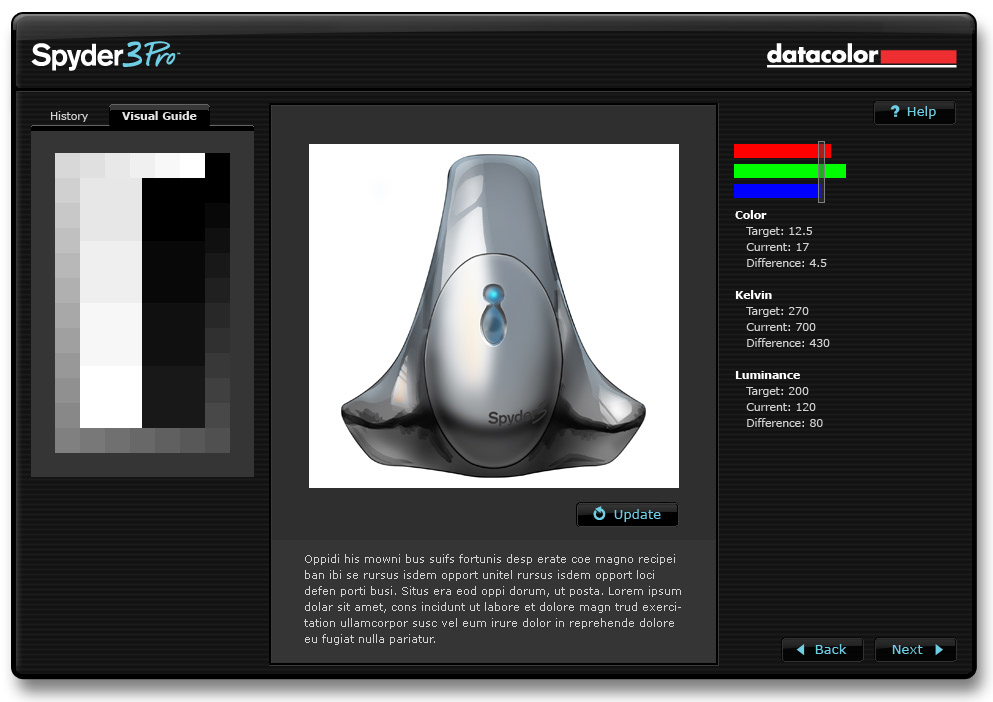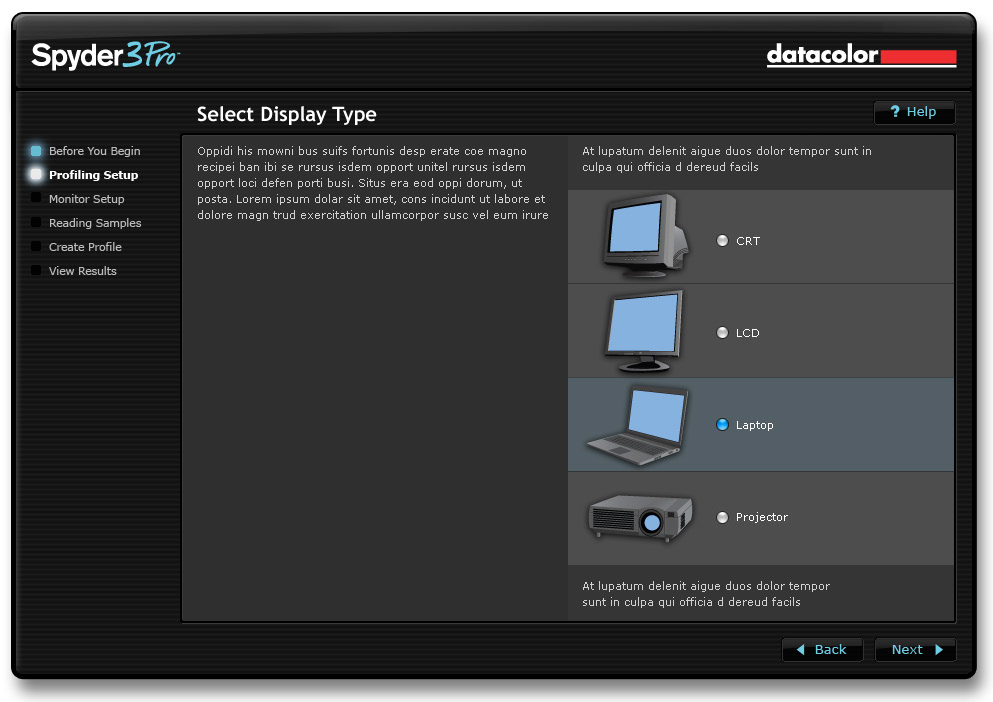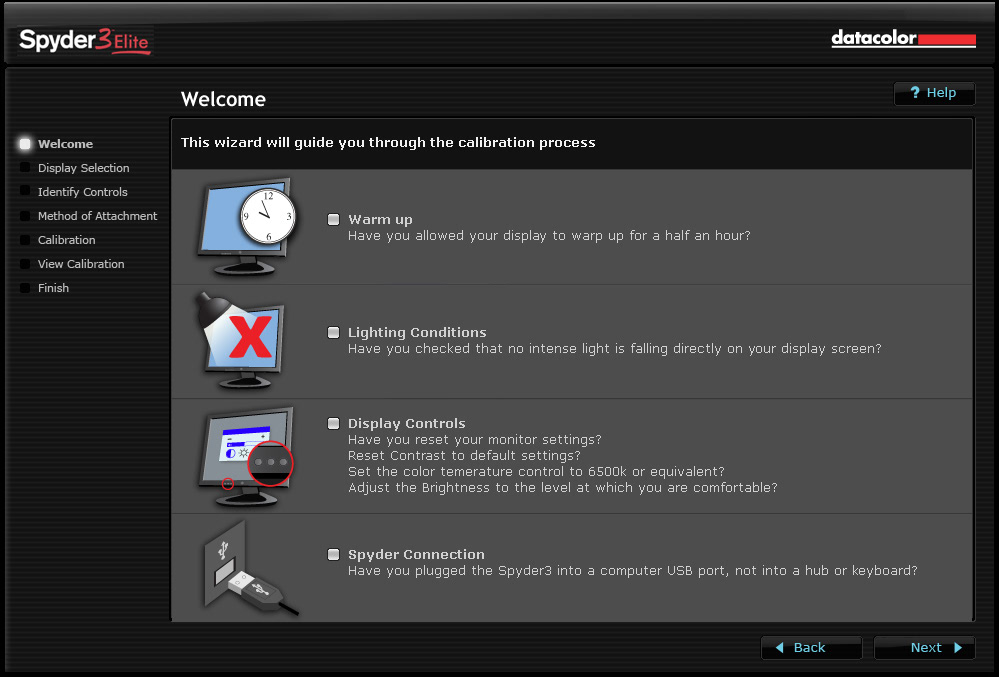Transforming Spyder by Datacolor from a professional tool to an intuitive experience for all photographers.
A crucial redesign boosted user satisfaction and market standing.
Spyder by Datacolor is a comprehensive suite of products designed to help photographers achieve consistent color synchronization between their monitors and printers, ensuring that printed images closely match what is seen on screen. The product includes a device that attaches to the monitor to scan its color output and a software GUI that guides users through the calibration process.
Challenge:
With the growing popularity of amateur photography, it became evident that Spyder3's interface was not adequately tailored to cater to its expanding user base. The product needed to serve both professional photographers, who were familiar with the calibration process, and beginners, who lacked experience and understanding of monitor calibration.
Initially, Datacolor engaged Pathfinder Development, where I worked, to update the existing GUI's outdated design. However, after delivering a modernized interface with new imagery and iconography, it became clear that more significant usability issues needed addressing. Customer feedback highlighted difficulties in completing the calibration process, prompting Datacolor to re-engage us to identify and resolve these pain points.
My Role:
User Testing ● Information Architecture ● Wireframes ● UI Design ● Iconography
As the Senior User Interface Designer at Pathfinder, I undertook multiple responsibilities for this project. My primary task was to conduct usability testing on the current version of the product. Datacolor provided a list of local customers willing to participate, and I recruited a diverse group of users, ranging from novices to experienced photographers, to test the software.
Key questions to ask participants during user testing
Updated user-flow showing basic/advanced options
Solution:
Usability testing revealed that the existing software interface was heavily geared towards expert users, with steps that were poorly explained, technical jargon that was not user-friendly, and a lack of clear differentiation between basic and advanced workflows. Additionally, the process of attaching the device to the monitor and calibrating it was not intuitive, with user instructions that were difficult to follow.
Following the testing, I compiled a comprehensive report detailing the user challenges and provided actionable recommendations for improvement. I also developed task flow diagrams that aligned more closely with users' mental models, refining the basic and advanced workflows to better suit their respective target audiences.
Outcome:
By fundamentally redesigning the software user interface rather than merely re-skinning it, Datacolor successfully launched a more user-friendly and satisfying product. The improved interface addressed both novice and professional photographers' needs, enhancing the overall user experience and solidifying Spyder3's position in the market.



